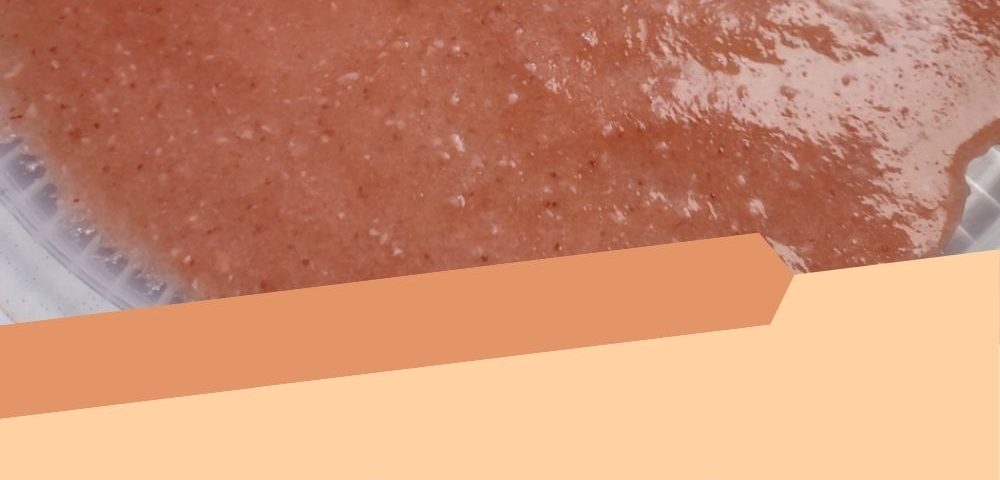Written by Bernie Carr
With the high prices of food, I am trying to avoid waste as much as possible. I had an opened bag of frozen fruit looked like it was starting to get ice crystals and freezer burn. As we covered in our previous article on freezer burn, the food is still safe for consumption, but some of the quality may be lost the longer it sits. So I decided to use up the bag of frozen fruit by making fruit leather.
Fruit leather is a wholesome and nutritious snack that you can take with you anywhere. Kids like fruit leather, that’s why Fruit Rollups and Fruit by the Foot are so popular. Why not make your own all-natural version?
How to make fruit leather from frozen fruit
I based this recipe from the National Center of Home Food Preservation, I just adapted it to the ingredients that I have. The same recipe can be used for fresh, frozen or drained canned fruit.
Ingredients:
32 oz bag of mixed fruit
2 teaspoons of lemon juice
3 tablespoons of sugar
Equipment:
Blender or food processor
Oven, cookie sheet, parchment paper
OR
food dehydrator with fruit leather attachment
Here’s what I did:
Fruit puree
- Thaw out the frozen fruit by placing in a colander over a bowl to catch any liquid from the fruit as it thaws. Save the fruit liquid.
- You will need two cups of fruit to make 13×15 fruit leather.
- Puree the fruit in a blender or food processor. I used a mini food processor, but if you don’t have either of those, just crush the fruit with a potato masher. Add three tablespoons of sugar (according to your taste) and two teaspoons of lemon juice. Lemon juice prevents discoloration. Add the fruit liquid if the mixture is too thick.
Drying
For the sake of testing, I dried half in the oven and the other half in the food dehydrator.
Oven:
Preheat the oven to 140 degrees Fahrenheit.
Use a 13×15 cooking sheet. Place a piece of parchment paper to line the sheet. Smooth out any wrinkles.
Pour the puree on the cookie sheet and even it out with a spoon or spatula. The layer should be about 1/8-inch thick. Don’t spread too thin or too close to the edge.
Place the cookie sheet in the oven. Drying occurs from the outside edges toward the middle. Oven times vary so I can’t tell you how long yours will take. Check the sheet after two hours. Continue cooking if it’s still looks too wet. Remove from heat once you like the texture. If you leave it in too long, it will start to get crisp.
Allow the fruit leather cool completely. If you try to slice it while it’s hot, it will fall apart and you could get burned. Wait at least twenty minutes before handling. Peel off the parchment paper and store in plastic wrap or sealed container.
Food dehydrator:
Pour the puree into the fruit leather tray of the food dehydrator. There is no need to line it with parchment paper. Place the tray in the dehydrator.
Check the progress after four hours. It will take around six hours (depending on your dehydrator) to finish drying the fruit puree.
Properly dried fruit leather is translucent and slightly tacky to the touch, but easily peeled from the pan.
SOURCE: Colorado State University Extension, “Leathers and Jerkies”
Results
I left the puree drying in the oven a bit too long. The result was a crunchy, fruity snack, not fruit leather. But it still tasted good and the family ate all the pieces. My son actually liked the crunchy snacks more than the fruit leather.
My dehydrator batch was definitely fruit leather. It was pliable and chewy.
Overall, I was happy with the result of both batches and will make fruit leather again.
If you found this article interesting or helpful, please consider helping us out (without costing you anything)! We are an affiliate of Amazon.com, which means we received a small commission if you click through one of our Amazon links when you shop, at totally no cost to you. This helps keep the lights on at the blog. Thanks!
Bernie Carr is the founder of Apartment Prepper. She has written several books including the best-selling Prepper’s Pocket Guide, Jake and Miller’s Big Adventure, The Penny-Pinching Prepper and How to Prepare for Most Emergencies on a $50 a Month Budget. Bernie’s latest e-book, FRUGAL DIY has just been released on Amazon. Her work appears in sites such as the Allstate Blog and Clark.com, as well as print magazines such as Backwoods Survival Guide and Prepper Survival Guide. She has been featured in national publications such as Fox Business and Popular Mechanics. Learn more about Bernie here.



Hi, is this 140 degrees Centigrade or Farenheight?
140 Fahrenheight. Thanks for the question, I will clarify in the article.